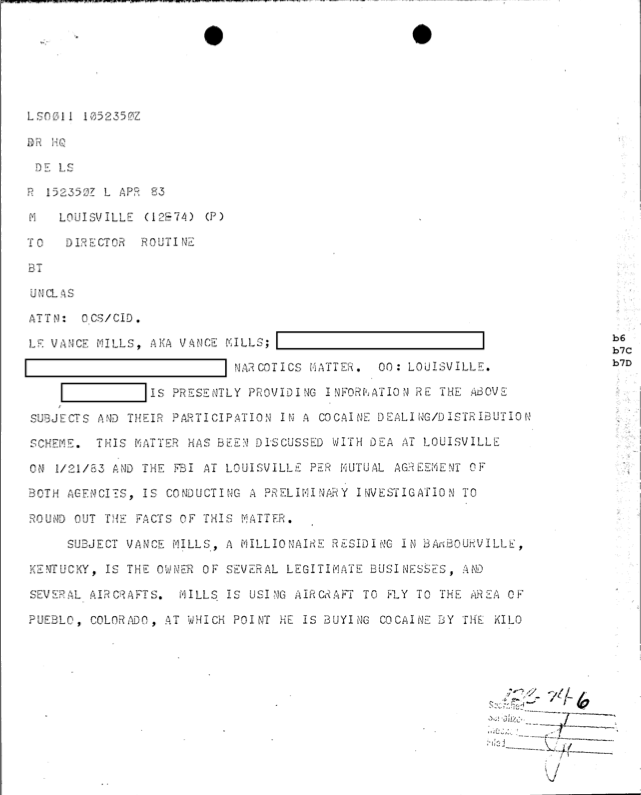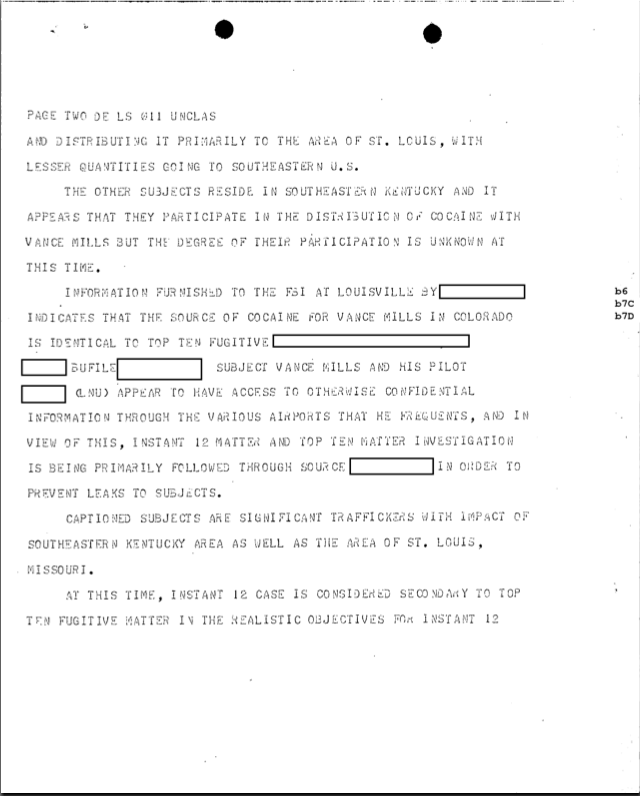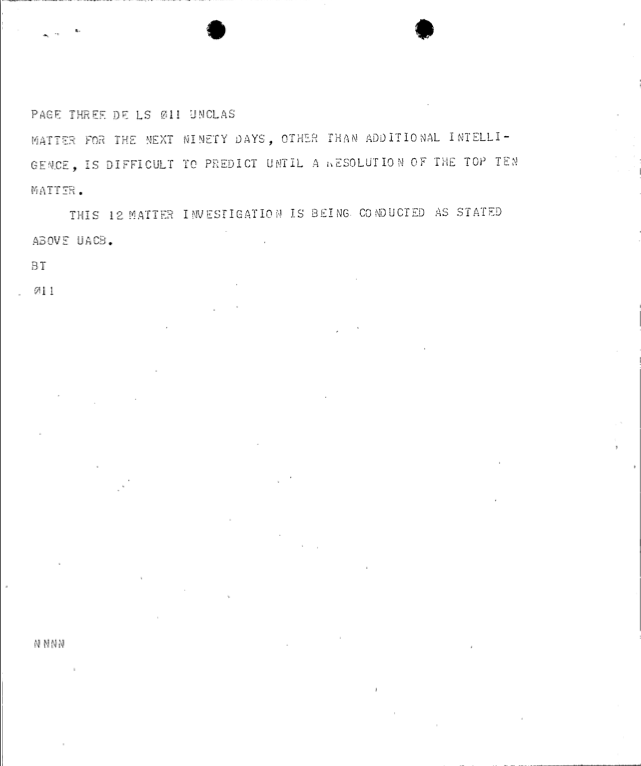I was talking to a colleague the other day about how many innocent people I believe Tom Handy, former Commonwealth Attorney for Knox and Laurel counties, Kentucky, has wrongfully prosecuted: approximately half a dozen or so men and women I’ve uncovered so far. My friend made the comment, “Sometimes people just go bad.”
I believe Tom Handy was bad from the beginning.
The Defendant in the following documents (whose name I’ve redacted because he’s been through enough already) was, in my opinion, framed for an armed robbery he did not commit by Troopers Roland Huckabee and Jimmy Phelps (AKA Jimmie Phelps) . This theory is supported by the fact The Defendant received a letter from the alleged victim of the robbery stating that the victim “was sorry for causing (The Defendant) all that trouble and was going to drop the charges.”
It’s my opinion victims don’t normally write apology letters to the armed robber that held them up.
Furthermore, The Defendant, while young, 18 to be exact, had become successful financially and professionally: he owned his own body shop, ran a small trucking service comprised of three trucks, and had been made president of another hauling company. He had no reason to rob someone of $40 at gunpoint.
I think small-town, small-minded jealousy played a large part in getting The Defendant indicted for a crime I believe he did not commit. (As you will find out, not once, but twice.)
Would it surprise you to learn Officer Jimmy Phelps was not on duty when he and Trooper Huckabee went to The Defendant’s home with the alleged victim to accuse him of armed robbery? In fact, court testimony from the London City Police Chief Albert Davis affirms Jimmy Phelps would not have been on official business for the City of London at that time. In fact, Jimmy Phelps wasn’t scheduled to work that day at all. So what was he doing there?
The Defendant was asked under oath, “Has there been trouble in the past between you and Trooper Huckabee and you and city policeman Phelps?” and “Has Trooper Huckabee told you directly that he was going to ‘get you one way or the other?'” and “Did also city policeman Phelps tell you in words or substance that he was going to ‘get you’ also?” The Defendant answered “YES” each time.
Allegedly, the victim was “signaled” by a car on Interstate 75 to pull over on the side of the road, where he was then robbed at gunpoint.
Reading the alleged victim’s statement to police, I find it hard to believe The Defendant is going to turn around in the median, a maneuver reserved for law enforcement/public safety vehicles, then be confident enough to pull off and drive through the weigh station and back onto the highway, all to commit an armed robbery that anyone driving by is going to see immediately. I believe the vehicle had no fear of driving through the median and pulling off through the weigh station, actions performed by law enforcement, because the vehicle that “signaled” the alleged victim to pull over, was indeed law enforcement.
Not The Defendant.
Theory: you’re a 21-year old college student. You’re alone on the side of the road with people who wield enormous power over you. You’re hundreds of miles away from home in the wilds of southeast Kentucky. Your only thought is getting out of there in one piece. Are you going to do what these powerful people say? Maybe you were speeding. Maybe you swerved a little changing the radio station. Maybe you had a joint in the car. Whatever you did, you garnered the wrong people’s attention, and now you’re left with very little choice but to comply.
“I was traveling down Interstate 75 going south, and as I approached the scales on the interstate I noticed a car that was in the northbound lane and crossed the median and turned in the southbound lane, and proceeded south ahead of me. It turned off and went up into the scales and as I went south on the interstate, it came out…and pulled in behind me.”
True to the theme I’ve been emphasizing, you just can’t make this stuff up: the alleged robbery victim then drove to Tom Handy’s hotel, the Ramada, to report this alleged armed robbery on the highway.
At this point in time, Tom Handy is not yet a Commonwealth Attorney. He is a defense attorney. The Defendant hires Tom Handy, defense attorney, to represent him on the armed robbery charge. Tom Handy does so, right up until the trial.


Before it is time for The Defendant to actually go to trial for the armed robbery, a couple things happen: one, he is wrongfully charged with the murders of two businessmen, Horace Gill and Curtis Wilbur Murphy from Lakeland, Florida who were in Kentucky hoping to ride the coal boom, and two, his defense attorney Tom Handy, was made Assistant Commonwealth Attorney.


So the defense attorney, Tom Handy, not only abandons his client, The Defendant, who is on trial for an armed robbery I believe he did not commit, Handy goes to work for the very office prosecuting The Defendant for that armed robbery, an office now also pursuing a wrongful murder charge against him.
What is one of the first things Tom Handy does as a new Assistant Commonwealth Attorney for Knox and Laurel counties? He betrays The Defendant, his former client, by providing information about him to law enforcement:

To make matters worse, Tom Handy would go on to prosecute his former client, The Defendant, for these two murders!


The above newspaper article concerns The Defendant’s recanting of a statement that organized crime was involved in the murders of Horace Gill and Curtis Wilbur Murphy (from case file; publisher unknown):
“…a fourth suspect (The Defendant) renounced an earlier statement, saying he was induced by lawyers and attorneys to make the… false statement.
In his renunciation in court Tuesday, (The Defendant) claimed that officials obtained his signature to the statement by promising his leniency.
(The Defendant) testified at the Preliminary Hearing that the Officials threatened him with a longer sentence in another case (clearly the armed robbery case) and promised him leniency if cooperated. He accused a federal agent, a state police detective, two county attorneys, and the assistant commonwealth attorney of deceiving him when he gave a statement to police on July 8. (The Defendant) claimed he was ‘tricked, framed, fooled and deceived.’
‘It’s unfortunate that warrants were issued on the basis of his statement,’ said Tom Handy, Assistant Commonwealth Attorney.”
Tom Handy says it was ‘unfortunate’ that warrants were issued for organized crime gangsters/thugs that were regulars at Handy’s hotel(s): Frank Starkey (AKA Frank Delano Stanley) and Vanis Robbins.
It’s between these two cases, the armed robbery that I believe was not an armed robbery, and the murders of the two Florida businessmen, Gill and Murphy, that we learn Tom Handy did not eventually become corrupted as prosecutor: that horse was out of the barn from the beginning.
The Defendant would be convicted of the armed robbery charge but thankfully found innocent of the murder charges against him, unlike many other innocents who have had the terrible misfortune of crossing Tom Handy’s path since 1976.
If the flagrant disregard by Tom Handy of what’s fair and ethical in the justice system doesn’t anger you, then the conclusion (or lack thereof) of the Horace Gill and Curtis Wilbur Murphy double homicide case will. I believe Kentucky State Police and Tom Handy determined the true murderer of these men. But instead of an arrest and pursuing a case, the file was instead marked “closed.”









Note: the viable suspect had to take three separate polygraph tests before law enforcement could finally pronounce him “truthful.”

It’s clear Tom Handy and the KSP had the power to pursue a viable suspect for the Gill-Murphy double murder, but justice for these two businessmen was reduced to a polygraph test that had to be repeated three times to get a passing result for the suspect, who was then allowed to go free.
In less than half a page, the Kentucky State Police began cementing Tom Handy’s long, corrupt career as Commonwealth Attorney of Knox and Laurel counties, instead of upholding their core values, principles, and code of ethics:
“As a law enforcement officer, my fundamental duty is to serve mankind; to safeguard lives and property; to protect the innocent against deception, the weak against oppression or intimidation, and the peaceful against violence or disorder; and to respect the constitutional rights of all persons to liberty, equality and justice.”




























